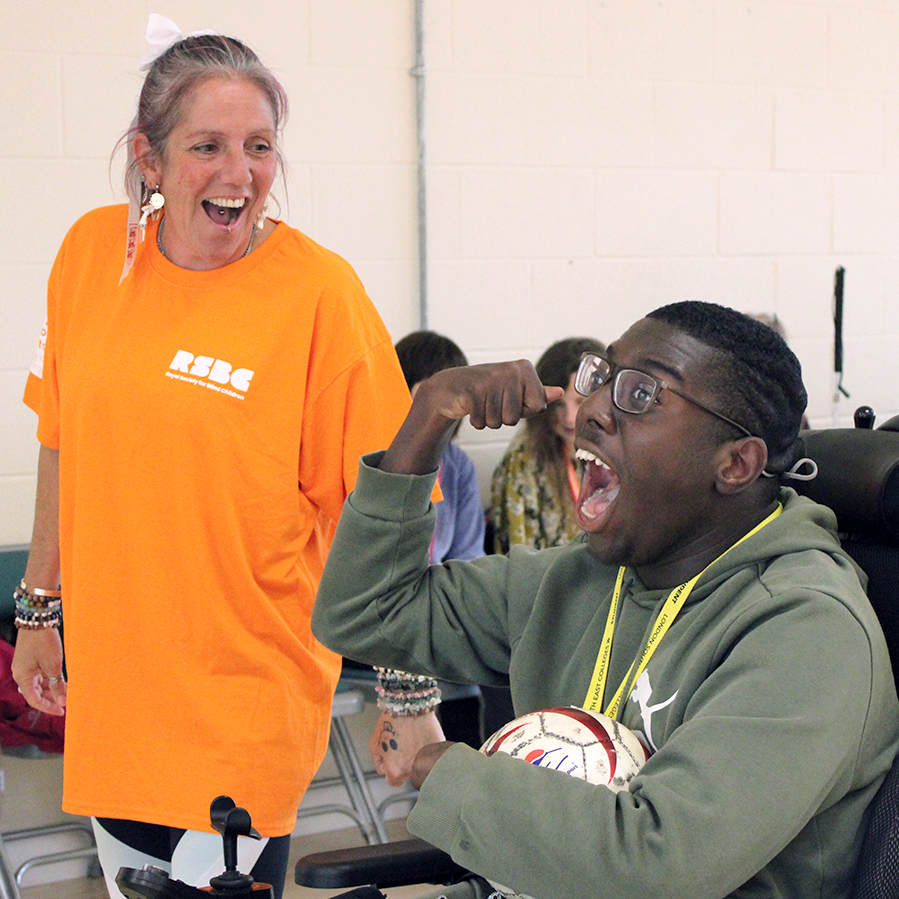Accessibility statement
Introduction
There are a number of steps that RSBC has taken to address accessibility needs for those with vision impairment and other disabilities. These include user testing by blind and partially sighted people.
We aim to continually improve the user experience and apply relevant accessibility standards.
Compliance status
The website is partially compliant, and we are working towards complete compliance with the Web Content Accessibility Guidelines (WCAG) 2.2 AA standard. Web Content Accessibility Guidelines
Known accessibility issues
We are aware that some areas of our website may not be fully accessible, including:
- Colour contrast in some areas of the site is insufficient.
- Some nested interactive controls are not announced by screen readers.
- Some page content is not contained by landmarks.
- Navigating sequentially through content requires more direct access to the primary content of the web pages.
- Using a keyboard only, the events widget is not accessible.
- Screen reader/keyboard users are restricted in some actions related to making donations.
- Some older PDF documents may not be fully accessible to screen readers.
- Some third-party content and embedded media may not meet accessibility standards.
- Certain interactive elements may require improvements for better usability.
- Areas of the website are not usable with keyboard-only navigation.
Please contact us if you need assistance with anything listed above or require a document in an alternative format.
We are actively working to address these issues and improve content and document accessibility speedily. Actions we will take will include:
- Undertaking regular audits.
- Ensuring that our action plan for continuous improvement is followed.
- Ensuring that new content and pages meet the required accessibility standards prior to going live on the website.
- Acting on feedback received by users.
Please note that this website has external links to third party sites which may have accessibility issues, over which we have no responsibility. Additionally, older content including videos, and older downloadable documents such as PDFs, may not be fully accessible.
Images
All non-aesthetic images used on the website (i.e. those used to represent a topic or a link) have accessible, descriptive alternative text.
Content
Content across the site has been written and formatted to make it as accessible as possible. This includes:
- The use of semantic headings, which are descriptive and used to highlight sections of text.
- Clear and easy to understand language.
- Meaningful text used for all links.
- No information is conveyed exclusively through the use of colour.
Technology used for testing
- Voiceover and Safari.
- Windows Magnifier and Google Chrome.
- JAWS and Google Chrome.
- NVDA and Brave.
- Keyboard navigation only.
We will continue to test with new technologies to improve the overall accessibility performance of this website.
UserWay accessibility functionality
Our website utilises the UserWay Accessibility Widget, a powerful tool designed to enhance the accessibility of web content for all users. This widget provides a range of features that allow users to customise their browsing experience to meet their individual needs.
The key features of the UserWay Accessibility Widget include:
Contrast options: The ability to toggle between different colour contrast settings to enhance readability.
Highlight links: These clearly distinguish links on the page by applying a highlight effect.
Increase text size: The size of the text can be adjusted for better readability without affecting the layout.
Adjust text spacing: Modify the spacing between text to improve readability, particularly beneficial for users with dyslexia.
Stop on-screen animations: Halt animations that may cause distractions or discomfort.
Hide images: Remove images to focus solely on text content, which can benefit users with visual impairments or cognitive distractions.
Dyslexia friendly mode: Enable a mode that enhances text readability for users with dyslexia by applying a specific font and layout.
Cursor customisation: Change the size and colour of the cursor to make it more visible.
Tooltips: Access additional information about page elements via tooltips.
Line height adjustment: Modify line height to increase space between lines of text.
Text alignment: Change the alignment of text to suit personal preferences.
Saturation adjustment: Reduce or increase colour saturation to minimize visual discomfort.
How to use the UserWay accessibility widget
To use the UserWay Accessibility Widget, simply click on the accessibility icon located on the top left hand corner of the website. From there, you can enable or disable features as needed to customise your browsing experience.
Layout
The site uses Cascading Style Sheets (CSS) to control all presentation and layout so that content is well structured and easily accessible via assistive devices.
Fonts
As well as the ability to increase the text size on the website by using the Accessibility widget at the top left hand side of the website, the font size can be increased or decreased in your browser by following these steps:
Microsoft Edge
To make a web page larger, select Settings and more then select Zoom in, Zoom out or Full screen.
You can also use the following keyboard shortcuts:
Ctrl + plus sign (+) Zoom in by 25%
Ctrl + minus sign (-) Zoom out by 25%
Ctrl + zero (0) Reset zoom level to default
Ctrl + Scroll wheel up Zoom in
Ctrl + Scroll wheel down Zoom out
F11 Switch between full screen and exit full screen
Mozilla Firefox
Hold down the Ctrl button on your keyboard and press the plus (+) key. You’ll find that this will enlarge the text. To enlarge again, repeat the procedure. Keep repeating until the text is enlarged to your requirements. If you need to make the text smaller, press Ctrl on your keyboard and the minus ( – ) key.
Apple Safari
Hold down the Apple Key and press the (+) key. You’ll find that this will enlarge the text. To enlarge again, repeat the procedure. Keep repeating until the text is enlarged to your requirements.
If you need to make the text smaller, press the Apple Key on your keyboard and press the (-) key.
Google Chrome
Click the ‘Customise and Control’ spanner symbol in the top right hand corner (Alt + E).
Select ‘Settings’ (‘Preferences’ on Mac and Linux).
Click on ‘Under the Bonnet’ and customise your fonts and font size in the ‘Web Content’ section.
Microsoft Edge
Select Settings and more.
Choose Zoom in, Zoom out, or Full screen.
To set the default zoom level, go to Settings and more > Settings > Accessibility.
Select the desired zoom level from the drop-down menu under Page zoom.
Navigation aids
The home page is accessible from every page on this website, and a sitemap xml is in place and accessible in the footer on each page.
Rich media content
We are committed to providing transcripts and/or subtitles for key pieces of new video content available on the website.
We use YouTube descriptions and captioning. These captions can be accessed by clicking the ‘CC’ button within the video player.
Document downloads
There are a number of PDF documents available for download across the site. You can find out more about how to configure the free Adobe Reader software to obtain greater access to PDF files by visiting the Adobe site.
Access keys
In order to avoid any conflict with personal access keys you may have set up on your computer, we have chosen not to install bespoke access keys on this site. Efforts have been made to ensure the site is as easy to navigate as possible.
Download Adobe Reader for free
Feedback
We have designed pages and chosen colours and contrast on this website to be as accessible as possible, within certain unavoidable constraints.
We will make continual improvements to the website, and so we welcome any suggestions or feedback that you may have. We can also provide information in an easy read format.
Please email connections@rsbc.org.uk with your comments or requests. We aim to respond within 5 working days.
Reporting issues
If you are using adaptive technology and are having any challenges in accessing information or with functionality on the site, please email connections@rsbc.org.uk with details, including the problem you have encountered and the type of technology being used.
Further information
More information on how to make your browsing experience easier is available for the BBC’s “My Web My Way” website. This includes advice and help for those who may benefit from making changes to their browser, operating system or computer to be able to view the web in a more accessible way.
Statement review
This statement was last updated on 21.02.2025 and will be reviewed regularly to ensure ongoing compliance.



